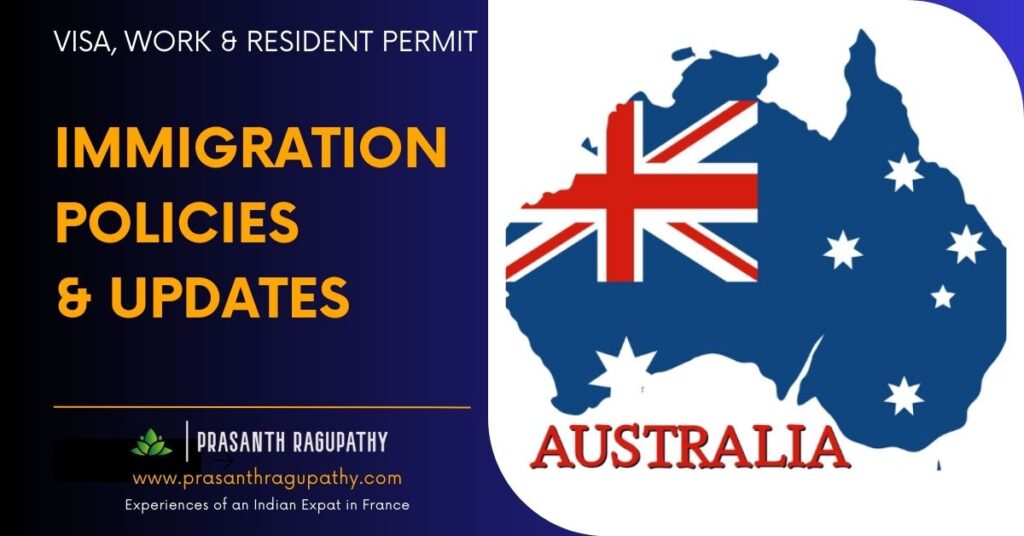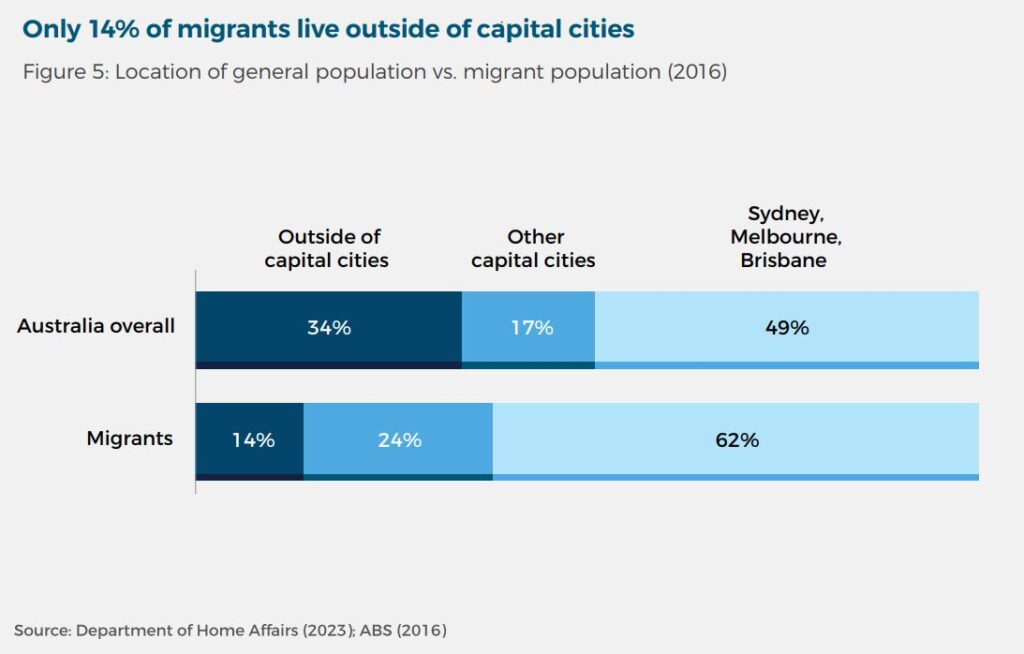The Australian government published its next 10-years migration policy on 11th December 2023, with a target to halve immigration by June 2025.
- The policy plans reduce the annual immigration intake to 250,000 approximately by June 2025, inline with pre-pandemic levels.
- Includes stricter English language requirements to prevent the use of student visas as a “back door” entry for low-skilled jobs.
- Students applying for a second visa must prove that any additional course would support their academic aspirations or careers.
- Family visas and other permanent visa pathways aren’t concerned by these changes.
Approximately 510,000 people came to Australia in 2023, but the minister said her government will “bring numbers back under control” and also reduce the annual migration intake by around 50%.
The new migration policy targets 8 key action points, as explained in the official publication on 11th Dec 2023 Getting migration working for the nation For workers. For businesses. For all Australians.
Targeting temporary skilled migration to address skills needs and promote worker mobility
- A new 4-year temporary skilled worker visa “the Skills in Demand visa” to replace the complex single employer-sponsored Temporary Skill Shortage visa.
- The government will create 3 targeted pathways within the Skills in Demandvisa,
- The first pathway is the Specialist Skills Pathway, earning at least AUD135,000 like Cyber Specialists, Software Engineers, etc.
- Second one is the Core Skills Pathway, for people who will be paid a salary at or above the TSMIT. This visa concerns the jobs in shortages like teachers, nurses, etc.
- The Government will further evaluate how to develop the third one known as Essential Skills Pathway, for lower paid workers with essential skills like aged care workers, etc.
- The Government will establish a median service standard of 21 days for the new Skills in Demand visa and 7 days for the Specialist Skills Pathway.
- If the employment with a sponsor stops, visa holders will have 180 days to find another sponsor and can work during this period.
- The Government will explore a model for employers to pay trailing charges and fees monthly or quarterly.
- A public register of approved sponsors, including the number of migrants sponsored and their occupations, will be developed to assist migrants wishing to find a new sponsor.
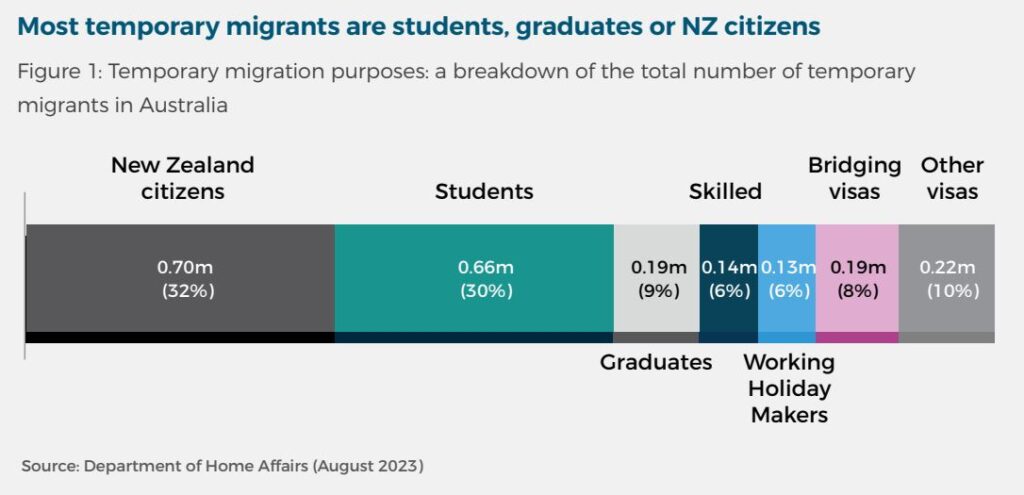
- The Temporary Skilled Migration Income Threshold (TSMIT) was increased from AUD53,900 (frozen since mid-2013) to AUD70,000 for applications from 1st July 2023, to ensure that the program focused on well-paid skilled jobs
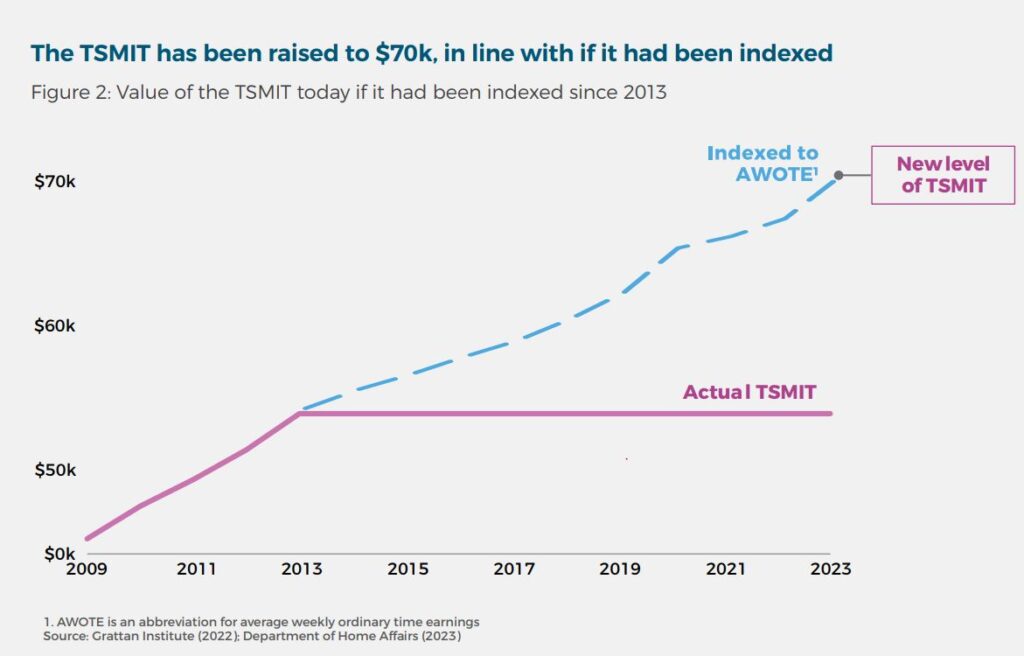
Reshaping permanent skilled migration to drive long-term prosperity
- A reformed points test for permanent skilled migration.
- A new Talent and Innovation visa for migrants in sectors of national importance.
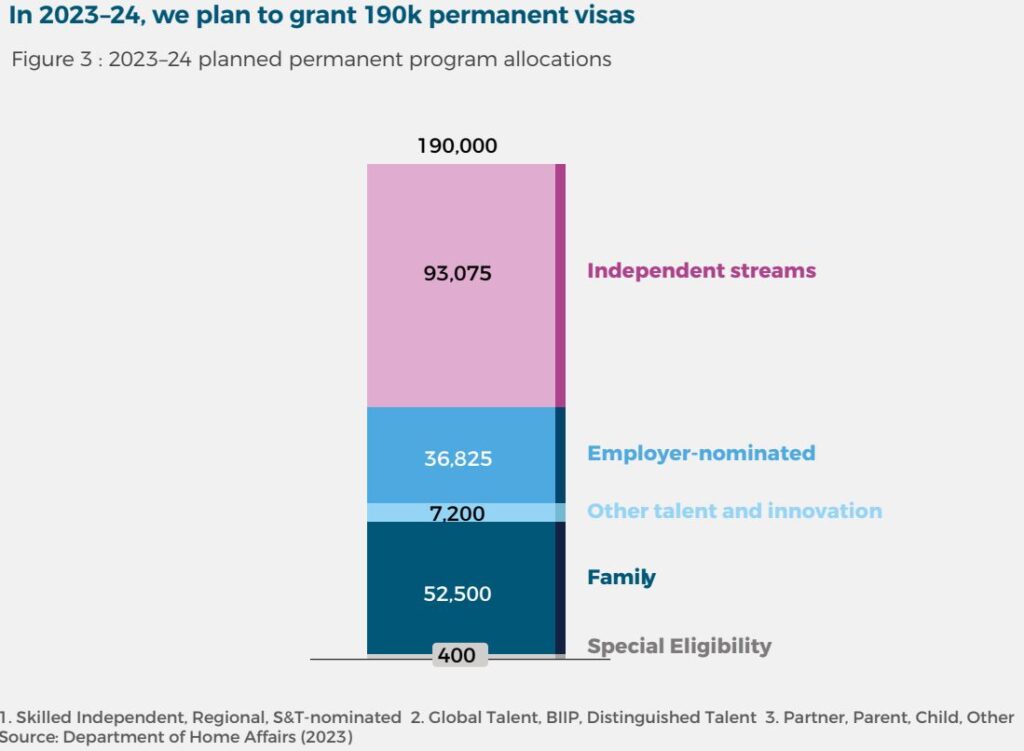
Strengthening the integrity and quality of international education
- English language test score for a Temporary Graduate visa will increase from an IELTS score (or equivalent) of 6.0 to 6.5 and the requirement for a Student visa will increase from IELTS (or equivalent) 5.5 to 6.0.
- To apply greater scrutiny to student visa applications, a new Genuine Student test for all international students will be introduced.
- Bolster the student visa integrity unit in the Department of Home Affairs to reduce misuse of Australia’s student visa system.
- Strengthen requirements for international education providers.
- Restrict onshore visa hopping that undermines system integrity and drives ‘permanent temporariness’. Applicants now need to show evidence of AUD24,505 in minimum savings, which is a 17% increase from previous levels. Also restrict Temporary Graduate Visa (TGV) holders from transferring back to student visas while being in the country.
- Shorter post-study work rights: The duration of an initial TGV will be shorter and the extension of post-study work rights will no longer be available. Only applicants who studied in a regional area will be eligible for an extension.
- TGV length under new settings: Initial TGV for 2 years for Bachelor Degree or 2 years Masters by coursework or 3 years for Masters by research or 3 years for PhD.
- Eligibility for a second TGV; + 1–2 years for study in a regional area (dependent on location)
- The maximum eligible age for a TGV will be reduced to 35 years.
- TGV streams will be re-named as ‘Post-higher Education Work’ and‘Post-Vocational Education Work’ streams to be more descriptive for the relevant applicants. The ‘Replacement Stream’ of the TGV and the subclass 476 visa will be abolished.
- TGV processing times for the ‘Post-Higher Education Work Stream’ will be backed by a 21-day service standard.
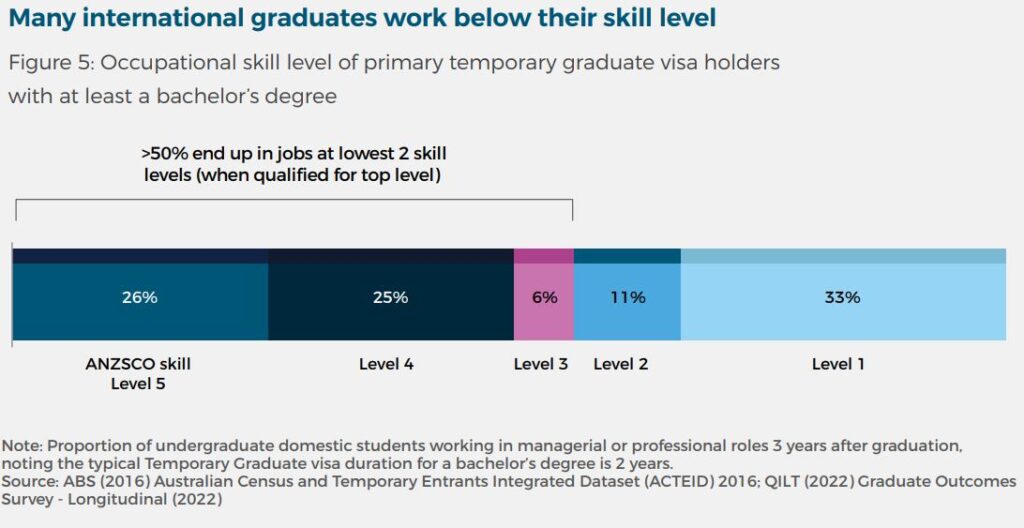
Tackling worker exploitation and the misuse of the visa system
- A new public register of employer sponsors to improve integrity and support migrant worker mobility. The register will include details such as: the name of approved sponsors, how many temporary skilled workers they
are employing, what occupations and / or pathway those workers are employed in. - The Government has already introduced to the Parliament of Australia, the Migration Amendment (Strengthening Employer Compliance) Bill 2023.
Planning migration to get the right skills in the right places
- A new approach to planning permanent migration over the long-term and greater state and territory collaboration on net overseas migration forecasts.
- Establish a formal role for Jobs and Skills Australia in defining Australia’s skills needs using evidence, including advice from tripartite mechanisms.
Tailoring regional visas and the Working Holiday Maker Program to support regional Australia and its workers
- To ensure regional visas receive the highest priority visa processing.
- Working Holiday Maker program to ensure migration supports development objectives in regional Australia and does not contribute to worker exploitation.
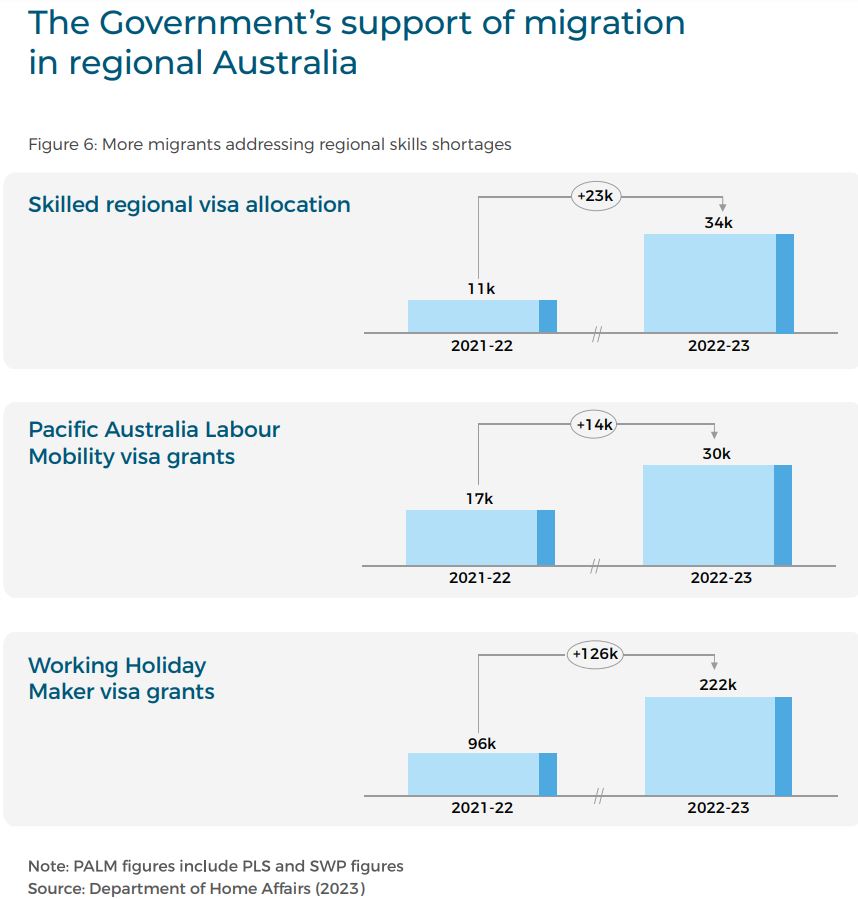
Deepening our people-to-people ties in the Indo-Pacific
- From 1st July 2023, New Zealand citizens living in Australia have a direct pathway to Australian citizenship, as long as they have been residents for 4 years and meet other eligibility requirements.
Simplifying the migration system to improve the experience for migrants and employers
- Streamline visa settings, reduce visa classes, and make the system easier to use.
- Removal of 20+ unnecessary and duplicative visas to simplify the visa system.
- To start reducing the administrative burden, the Government will initially reduce the number of visa subclasses by 20, for example by merging offshore and onshore visa classes such as the subclass 101 Child visa (offshore) and the subclass 802 Child visa (onshore) into a single Child visa.
Sources & References
- Government’s Migration Strategy for Australia – 11th Dec 2023 Getting migration working for the nation For workers. For businesses. For all Australians.
- Migration Strategy – At a Glance
- BBC – Australia to halve immigration intake, toughen English test for students
- The Guardian – Labor targets student and some worker visas in overhaul of Australia’s temporary migration program

